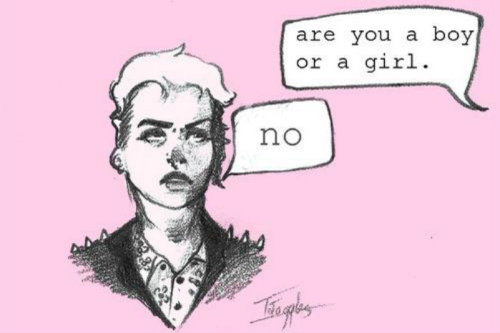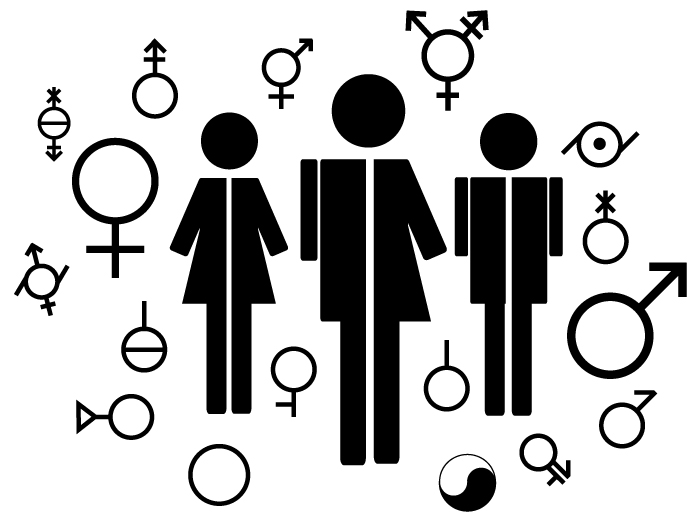I'm relatively unsophisticated about these things, but I've often wondered what some of these gender identity terms meant - and most of them I've never heard of. This survey includes a handy explanation of each.
News.au: There are 33 possible responses to this question in The Australian Sex Survey, which is being conducted by researchers at The Queensland University of Technology (QUT).
Per QUT behavioral economist Stephen Whyte, “Most people’s description of gender is very pigeonholed — either male or female — but there are so many new categories of different gender identities which allow people to identify across a spectrum.”
A screenshot of the page from the questionnaire is below - here's an explanation of each of the possible answers:
Woman: A person born as a female, and who identifies as female.
Man: A person born as a male, and who identifies as a male.
Transgender Man: A person who was assigned female at birth, but now identifies as a man. Some trans people choose to undergo gender reassignment surgery. Others prefer not to, but still identify as a different gender.
Transgender Woman: A person who was assigned male at birth, but who identifies as a woman. As above, some trans people choose to undergo gender reassignment surgery. Others prefer not to, but still identify as a different gender.
Trans person: This can mean transsexual or transgender. A transsexual is a person who emotionally and psychologically feels that they belong to the opposite sex.
Trans Man: A trans man is someone who was assigned female at birth, but now identifies as a man.
Trans Woman: A person who was assigned male at birth, but who identifies as a woman
Female to Male: This term is often abbreviated to ‘FTM’ and refers to a transsexual or a transgender man.
Male to Female: This term is often abbreviated to ‘MTF’ and refers to a transsexual or a transgender female.
Transsexual: A person who emotionally and psychologically feels that they belong to the opposite sex. Transsexuals are people who transition from one sex to another, usually through dress, hormone therapy, etc.
Cisgender: A person who identifies with the gender of which they were born. For example, if someone is born as a female and identifies as a woman.
Cis Female: Cis is short for cisgender. So a cisgender female is a female who identifies as a woman.
Cis Male: Cis is short for cisgender. A cisgender male is a male who identifies as a man.
Gender Non-Conforming: A person who does not identify with either the male of female genders.
None Gender: A person who does not identify with any gender in particular.
Non-Binary: A person who does not identify entirely with either the female or male genders. They may identify somewhere on a spectrum.
Neutrois: Neutrois is a non-binary gender identity which is considered to be a neutral or null gender.
Genderfluid: A person who does not identify entirely with either the female or male genders.
Genderqueer: An overarching term used to describe people who do not identify exclusively as either male or female.
Demigender: This term, (demi means half) is an umbrella term for nonbinary gender identities that have a partial connection to a certain gender.
Demigirl: A person (can also be called a demiwoman or a demifemale) who identifies partially with being a woman or has feminine characteristics. They may have been assigned female as birth, but they could also have been born as a male.
Demiboy: A person (can also be called a demiman or demimale) who identifies partially with being a man or masculine characteristics. They may have been assigned male at birth, but they could also have been born as a female.
Agender: This literally means ‘without gender’, so a person who doesn’t identify with any gender.
Intergender: Intergender people have a gender identity that is in the middle between the binary genders of female and male, and may be a mix of both.
Intersex: A person who is born with the reproductive anatomy of both a man and a woman. For example, they might appear to be female on the outside, but have mostly male-typical anatomy on the inside. These people were previously referred to as hermaphrodites, but that term is considered rude and outdated.
Pangender: A person who identifies as more than one gender.
Poligender: Translates to ‘many genders’. A person who identifies as more than one gender.
Omnigender: Translates to ‘all genders’. A person who identifies as more than one gender.
Bigender: Translates to ‘two genders’. A person who identifies as both male and female genders. Some bigender people have two distinct male and female personas.
Androgyne: A person who doesn’t identify with either gender. They are both feminine and masculine.
Androgyny: The combination of masculine and feminine characteristics. Androgyny can apply to many things - someone’s gender identity, sexual identity, and even fashion.
Third Gender: People who identify as neither a man nor a woman. Some cultures refer to some of their people by a third gender.
For example, in Samoafa’afafines are male at birth, but if a family had more boys than girls and needed more women to help with housework, they male children would be raised as a fa’afafine.
Trigender: Translates to three genders. A person who shifts between the male, female and third genders.
 |
| This is what the survey question looks like.Source:news.com.au |
The survey is open for the next eight weeks and the preliminary findings will be presented around Christmas.





My head hurts............
ReplyDeleteExcept for the categories by sex -- man, woman, intersexed -- the rest is comprised of subjective categories. Intersexed is objectively anomalous -- deviating from the other two objective categories. The other 29 (29 if all of the many fuzzy overlaps are counted) are subjective deviations.
ReplyDelete--Chairm.
As has been said in many other context--Get A Life
ReplyDelete